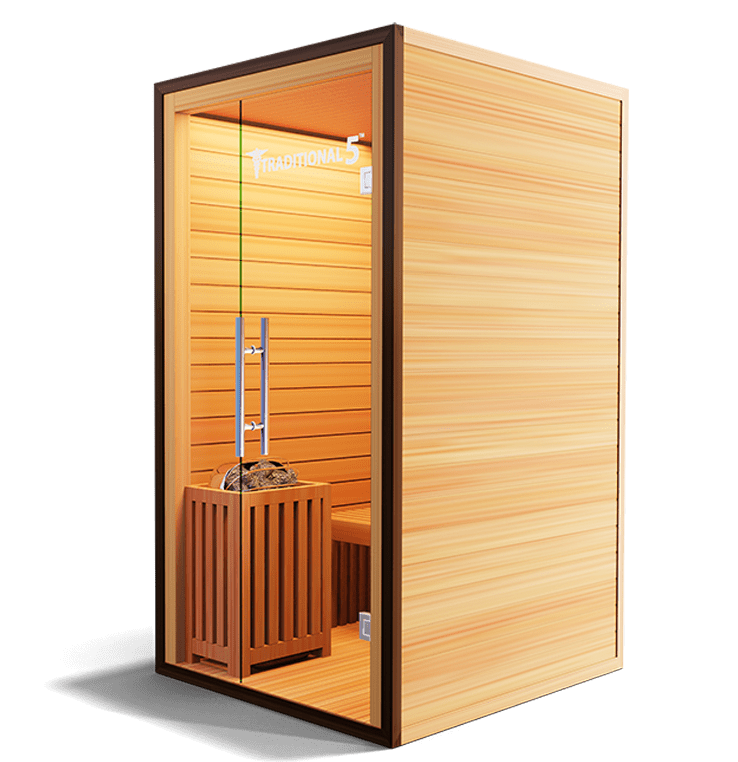A Biased View of Traditional Sauna
Table of ContentsAbout Traditional SaunaThe Main Principles Of Traditional Sauna What Does Traditional Sauna Do?7 Easy Facts About Traditional Sauna Explained
The majority of the weight shed in a sauna is water loss and is re-gained upon rehydrating. Without a doubt sauna can be an important part of a healthy and balanced weight loss program. To take a look at the differences in between conventional and IR saunas, I will certainly divide these into proven, theoretical, and fabricated differences.Therefore, the hottest factor in the saunawhich is at the ceiling straight above the sauna heateris usually between 185 and 190 F. Traditional Sauna. Claims that a typical sauna surpasses 200 F is just not true and not appropriate for electric saunas sold in the US. The temperature for a far-infrared sauna is normally set in between 120 and 140 F; nonetheless, unlike the traditional sauna, the goal in and IR room is not to accomplish a high temperature
Due to this, the temperature level distinction is nearly pointless, considering that profuse sweating causes both sauna kinds, but the technique of heating up the body is different. In an IR sauna the bather will certainly really feel hot and will certainly sweat profusely, yet at much reduced temperatures. Thus, if the goal is to invest longer time periods in the sauna, the IR sauna is an excellent choice.

5 Easy Facts About Traditional Sauna Explained
When the heat is attained, the components cycle on and off to keep the high temperature level. Most conventional sauna individuals take pleasure in putting water over the rocks to develop heavy steam to elevate sauna moisture degrees. The advantages of pouring water over the rocks include: making the area more comfy, moistening the nasal flows, and allowing the use of aromatherapy by mixing crucial oils with the water.
In a far-infrared sauna, the heat waves penetrate the body to properly heat the body and elevate the body core temperature. To attain this increased temperature, Far-infrared emitters produce infrared power which is close to the exact same wavelength as that which the body normally emitsoften referred to as the "Crucial Array" of 7 to 14 microns), so the power is well gotten by the body.
When the energy enters the body, it causes the body temperature level to raise and inevitably leads to sweating. In an infrared sauna it's essential for the emitters/heaters to remain on practically constantly. Since there is no mass of rocks to retain warmth, the sauna will certainly cool down if the emitters shut down.
As discussed have a peek at this site over, the sauna bather in an infrared space wants to position himself before operating emitters to obtain maximum gain from the warmth. The home heating time for the two spaces can be extremely different, depending on just how the spaces are made use of. For a standard sauna, a bather must allow 30-40 mins for the space to achieve a wanted temperature and to correctly pre-heat the rocks.
The Best Guide To Traditional Sauna
A well constructed sauna will commonly accomplish a temperature level of 150-160 F in regarding 30-40 mins. For hotter temperatures, the space might require to warm for a longer duration.
To some, 15 minutes was "lost" while the infrared power heated the wood panels rather than heating up a body, while others locate a pre-heated area to be more comfortable and believe an elevated starting temperature is needed to begin perspiring. The size of recommended usage for each space is approximately the very same (10-15 minutes per session); nonetheless, as a result of the reduced air temperature levels and the capacity to really feel the results of infrared warmth much faster than a conventional sauna, it is not unusual for a person to spend an overall of 20-30 minutes in an infrared sauna.
Conventional saunas have a tendency to be larger (thus use more power) than infrared saunas, although typical saunas are absolutely offered in one and 2 individual dimensions. For a two-person typical sauna, 5x6 or 5x7 dimension is most popular. The leading bench can conveniently seat two or three people and is also enough time to relax during the sauna session.


The ordinary cost per kWH of power in the U.S. is approximately $0.11, so a 4.5 kW heating unit will cost about $.50 to run for one hour, if the heating system runs constantly for one hour. Commonly a sauna heating unit will certainly run for 75% of the initial hour and 50% web of subsequent hours on since the elements cycle once the set temperature level is accomplished.
Not known Incorrect Statements About Traditional Sauna
A two person far-infrared room is typically literally smaller sized than a traditional sauna, usually about 4' x 4' or smaller sized. The IR heater is commonly 1.5-1.7 kW making use of a 120 volt 15 amp plug-in service. Considering that the room can be utilized earlier than a sauna room, we will certainly think the area is made use of for to of an hour consisting of warmth up time.
There is a seldom discussed distinction in the social experience in between the 2 spaces. While our society has actually shed several of the social benefit of the read here standard sauna experience, it can be really socially rewarding. From family time in the sauna, to heart-felt discussions with loved ones, to sauna partiesthe traditional sauna experience can lead to intimate mingling.
The majority of greater end infrared spaces include tinted light treatment, noise systems and full-glass fronts. The size of most areas enable 2 people to conveniently use the room, while some layouts might permit a 3rd or fourth individual to utilize the space. Customized infrared rooms are additionally readily available, with space dimensions available up to 7' x 8' x 7' high.